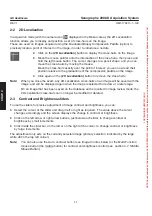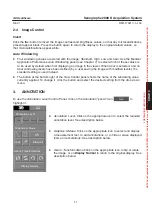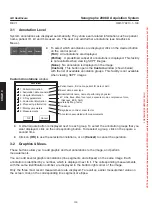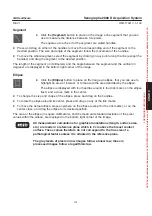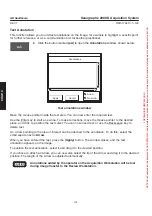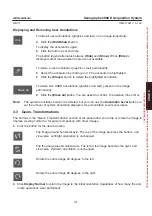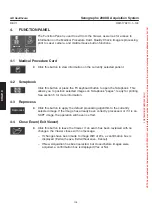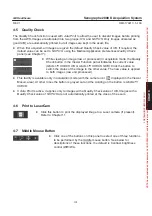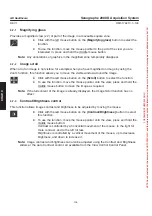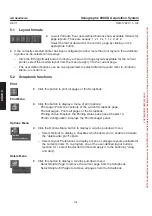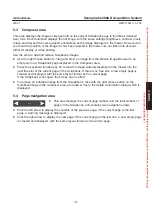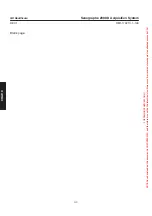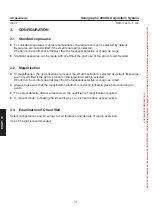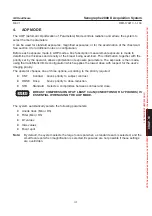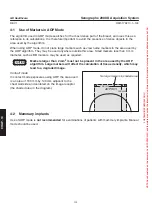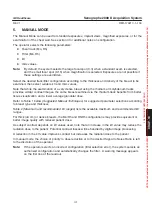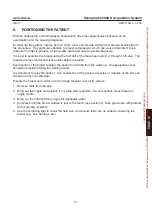
CHAP
. 10
GE Healthcare
Senographe 2000 D Acquisition System
REV 1
OM 5179217–1–100
111
CHAPTER 10 – IMAGE ACQUISITION PROCEDURE
1.
OVERVIEW
This chapter explains the procedure for standard examinations using the Senographe 2000 D, from
the preparatory tasks to be performed on the equipment (selection of exposure mode, configuration,
etc.) through patient positioning, with notes on the exposure sequence and image processing. In the
section on Manual Mode, you will find a table of suggested parameter settings.
An exam using the Senographe 2000 D acquisition application is performed in exactly the same way
as a conventional exam (e.g., using a Senographe DMR) in terms of operation and patient positioning.
The major difference is that you use a Digital Detector instead of a conventional film/screen cassette.
The images are available on the Senographe 2000 D Acquisition Workstation screen within a few
seconds after the exposure.
Raw images can be viewed immediately after they have been acquired, followed by processed
images. Images of earlier exams can be recalled from the image disk for review.
2.
PREPARATION
2-1
Worklist
Exposures can only be made after patient/exam selection from the Worklist (Chapter 8). If the
examination has not been scheduled and included in the Worklist, a new entry can be made, but
image acquisition is not permitted until basic patient information has been recorded in the system.
After selection of the patient for whom you want to start acquiring images, press the
Start Exam
button to continue with image acquisition. The Viewer window (Chapter 9) opens, and exposures are
permitted.
2-2
Preparing the Equipment
Set the image receptor, field size, and compression paddle for the required view.
No specific tube warm-up procedure is needed at power on.
Different field sizes and compression paddles can be used.
Choose the appropriate exposure mode. This may be AOP mode (Automatic Optimization of
Parameters), described in section 4, or Manual mode, described in section 5.
Use of the AOP Mode provides the best quality/dose compromise, according to the priority selected by
the operator, but is not suitable for all examinations.
The digital detector incorporates a removable grid. In general, use of the grid is recommended for
standard exposures, but not when magnification is used (no exposure is allowed when the grid and
magnification platform are both present). See section 3 (Configuration).
FOR
TRAINING
PURPOSES
ONLY!
NOTE:
Once
downloaded,
this
document
is
UNCONTROLLED,
and
therefore
may
not
be
the
latest
revision.
Always
confirm
revision
status
against
a
validated
source
(ie
CDL).


